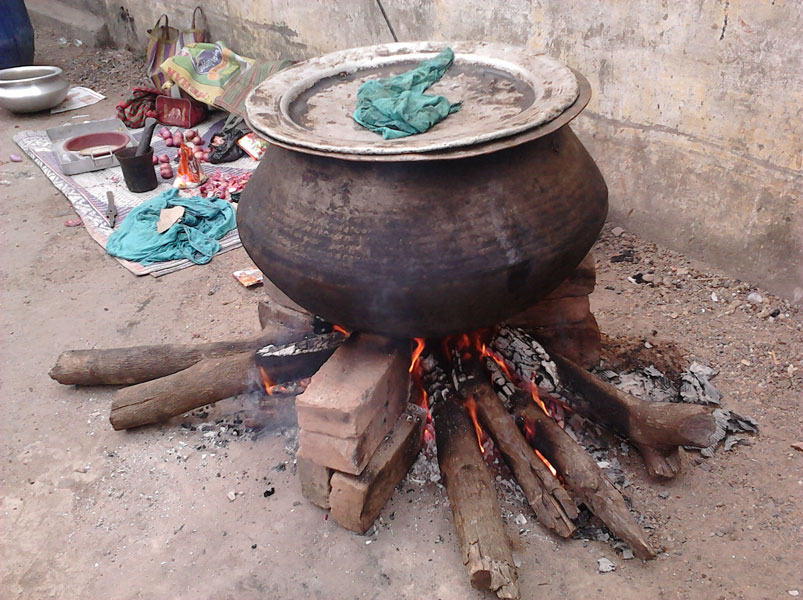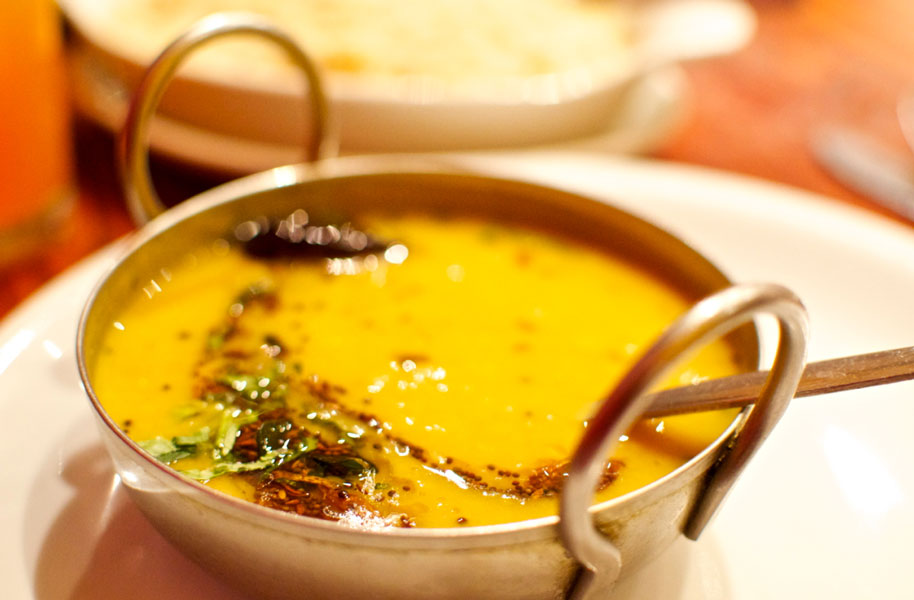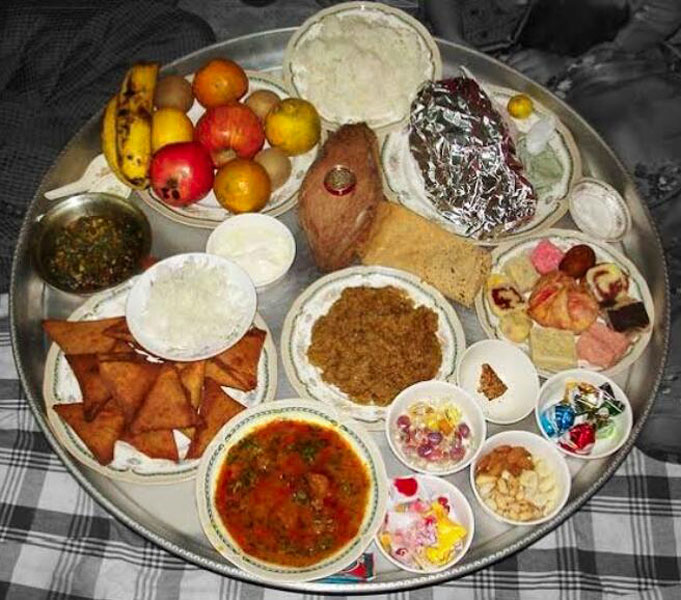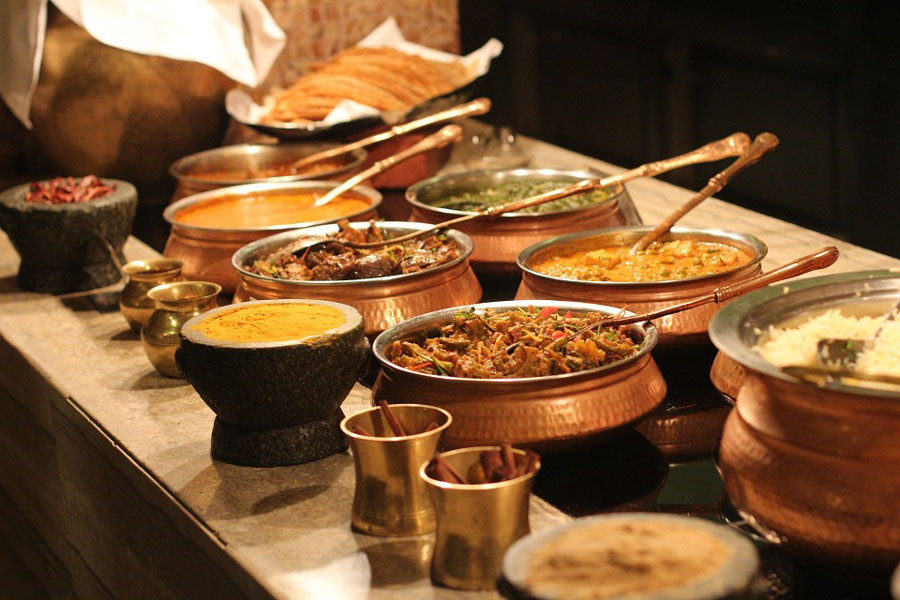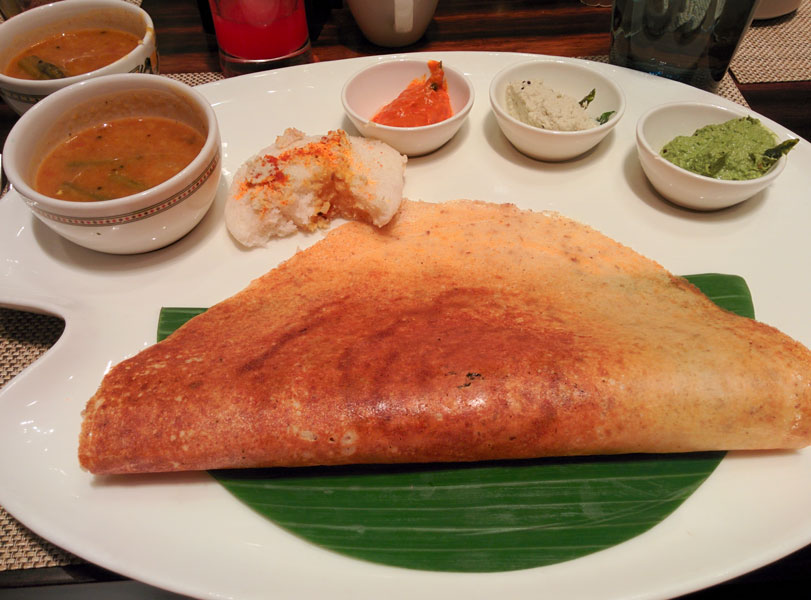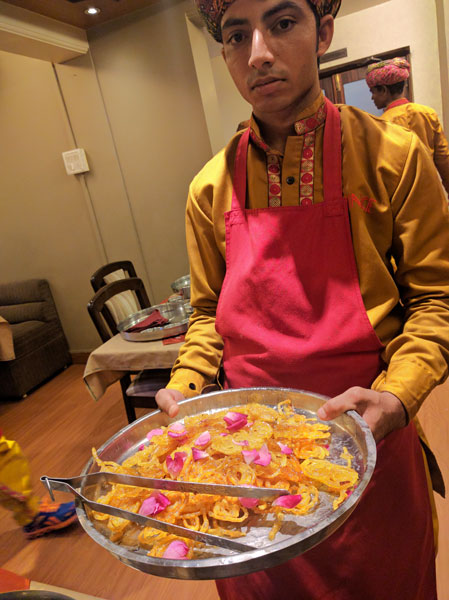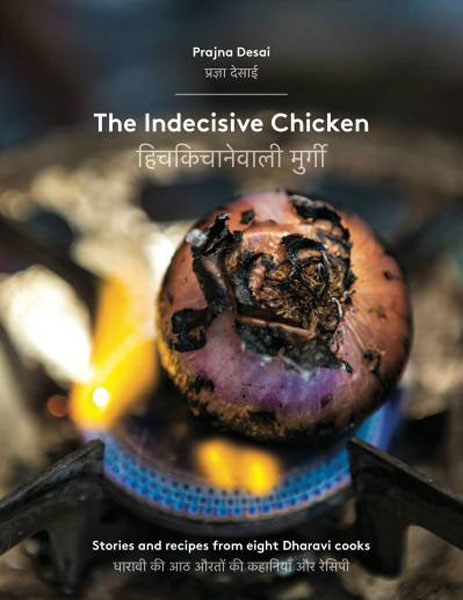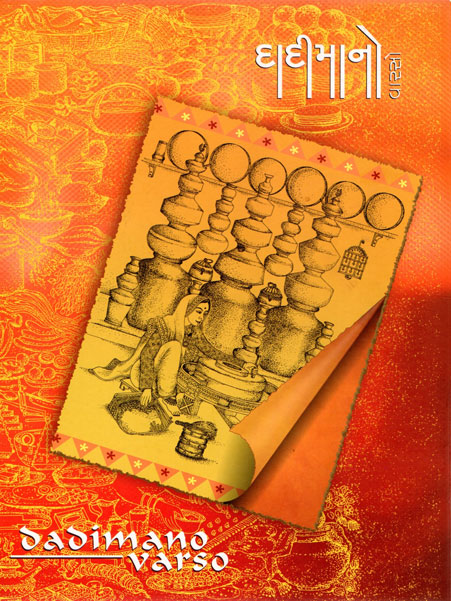Talking about Real Food
With its population of more than twenty million, Mumbai is home to some of the most refined dining in India. In this respect, it is not unlike the first cities of countries around the world — from New York to Singapore to Hong Kong. But it isn’t at these genteel establishments that Vikram Doctor hunts for the most interesting cooking that Mumbai has to offer, but in its home-cooked meals, its street food and store-bought snacks — in short, in the way that normal people eat.
An encyclopaedic source on the cooking life of Mumbai, Doctor has spent years tracking down and documenting things that many other cooks, eaters, readers, and even fellow food writers routinely take for granted. In his writing, Doctor casts a wide net over the mayhem of topics that make up modern Indian food and its history, from the provenance and shifting fortunes of the sugar cube to the decidedly mixed ways in which the Green Revolution is received by Indians, depending on their ideological inclinations.
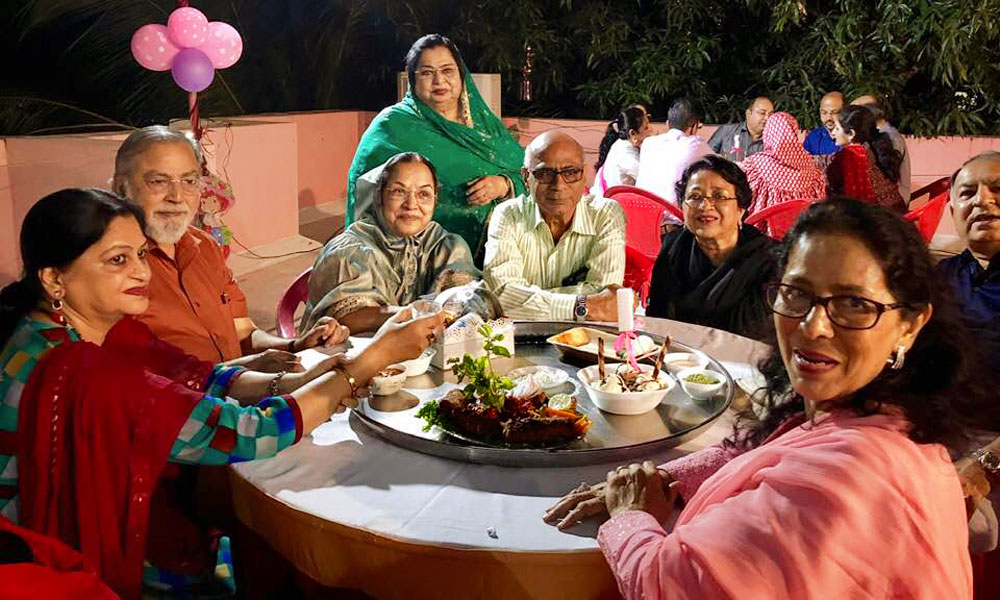
His frank, clear-eyed investigation of regional Indian food is as much a testament to his refreshingly old-school journalistic ethics as it is to his belief that one needn’t be seated at the most elaborate tables to take part in the enriching and illuminating comestible life of a place. His work reaffirms that life is thriving everywhere in Mumbai — in the work of ingenious small-scale food entrepreneurs; in the cuisines of proud and insular communities breaking out of their isolation through the act of sharing their food; and in the constant machinery of immigration that draws people of every economic station to the city.
There are all these dishes that poor people cook for themselves, which are nutritious, tasty, and environmentally sustainable. But they’re vanishing.
I met with Doctor at his Bandra apartment, which he shares with his partner Alok and a sweet black Labrador named Sheroo, and is lined with bookshelves that are bursting with books. In between brewing me a cup of coffee and offering me a slice of a friend’s famous Christmas cake, Doctor expounded on the changing face of food in Mumbai as well as on the ways that change and flux are an essential and integral part of this fascinating, multicultural city.
Rohan Kamicheril: Can you tell me a little bit about how you got into food writing?
Vikram Doctor: I first got into food writing by doing restaurant reviews. But I got bored with that pretty quickly. At that time there wasn’t a lot of diversity of restaurants in Bombay. And restaurant reviewing needs a particular mindset — which I don’t have. You need to just be interested in “restaurant food.” In India there’s a profound distinction between restaurant food and home food and I’ve always found home food to be much more compelling. Food is an interesting way to look at Indian society. Because everybody’s interested in food, you can get anyone talking about it. Food is also a way to connect with people who are often disregarded — women in particular, and servants — people who are further down in the social hierarchy. And their history is reflected in their food.
RK: How was it, logistically, making that move from writing reviews to writing about food in this more probing way? And how is what you do different?
VD: It’s all just writing. I’ve been lucky to always have editors who’ve been supportive.
RK: I guess what I mean is — are there other people who do what you do, at other papers?
(Doctor’s partner, Alok, interjects from the other room, shouting out, “Nobody in the country!”)I think what’s different about what I do is I put a little more research into it. As a journalist you’re used to researching stories. I’ve found that there are all these sources of information that people are just not accessing.
People don’t realise that there’s an incredible network of agricultural research institutes across India. It’s partly a legacy of the British, partly of the whole rural emphasis. There’s an agricultural research institute for almost everything.
I started writing to the directors of these institutes with queries. Some of them were bureaucratic, some said they needed permission to talk to me, but many were quite willing to talk, and I found them a mine of amazing information. They gave me a lot of insight into the issues facing farmers, what kinds of foods were being promoted by the government, what was being promoted by the food corporate sector. That,
I think, is one area where I have made a slight difference. Realising that all these resources exist and tapping into them.
RK: Have resources like these led you to stories you wouldn’t otherwise have found?
VD: One thing that interests me a lot is dhal. It’s something that people don’t write about, because it’s often seen as the least important thing on the menu. People focus on the breads and the meat and the vegetable dishes, but dhal is fundamental to Indian food.
Pulses are nitrogen-fixing, they grow on dry land, they produce income for marginal farmers. And, most of all, of course, they produce our main source of protein. But there’s very little done on pulses. I started investigating this and found that the big problem with beans and pulses is that each part of India has its own pulses, which they’re fiercely loyal to — or two or three, maybe. And often people won’t eat pulses from another part of India. You could do a pulses map of India — so toor dhal in the south, because that’s the basis of sambhar. In Punjab it’ll be rajma. It’s a very fragmented market.
But what’s also happening, which is interesting, is that commercial interests have stepped in. Canada, for instance, is now promoting yellow split peas as an alternative to toor. They’re pushing it with dhal mills, as a result of which, a lot of what we used to eat as toor is now Canadian yellow split peas. I’d say that in most places where you eat sambhar, it’s not made with toor any longer. It’s made with yellow split peas. And that changes the nature of sambhar. It’s not that it’s necessarily better or worse — yellow split peas are good in their own way — but they’ve changed the nature of the dish. Even the smell of the dish — toor has a wonderful smell, and yellow split peas smell of nothing.
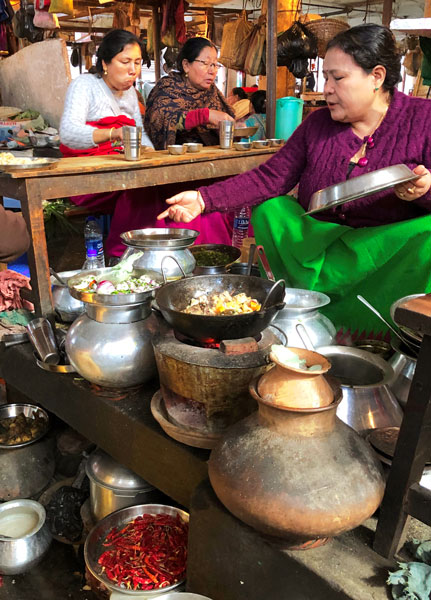
RK: Do you think that some kind of tension between food and technology is inevitable in a country like India? The Green Revolution, which is often credited with changing the way millions eat, is also not without its critics — for those very same reasons.
VD: Being a food writer in India, you have to keep in mind that you’re writing about food in a country where starvation is still a huge issue. This is why you will never find me criticising the Green Revolution. I know it’s fashionable, and people like Vandana Shiva go on and on about the Green Revolution — but my perspective is, go back to the ’60s, read the reports, read what was happening with food production then. The basic fact is that if there had been no Green Revolution, millions of people would have died. So, yes, many things went wrong with the Green Revolution, it encouraged fertiliser use, and, worse, pesticide use. But a lot of these problems are failures of implementation in the agricultural extension system which was supposed to educate farmers about the proper ways to use things, and in which they miserably failed. So the problems with the Green Revolution are many and the abuses are real and have to be corrected.
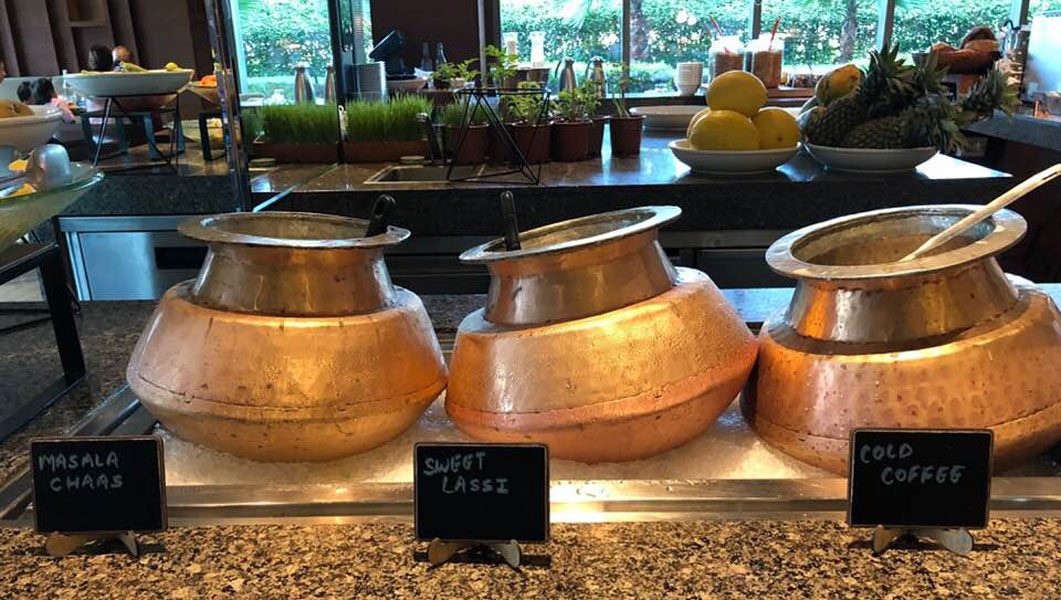
RK: Tell me a little bit about where you grew up.
VD: I was born in Mumbai and lived here till I was about twelve and then grew up in Chennai and studied in Kolkata for about two years. All my working life I’ve been in Mumbai.
Not belonging to one particular community has helped me, because I’m an outsider in all these communities.
RK: Has food always been a big part of how you viewed the world?
VD: I think so. My parents are from different communities. My father is a Gujarati, my mother is a Malayali so I grew up in a household with multiple food traditions. The two from my parents, in addition to a third food tradition — which was the food of our servants. We always had cooks, because my mother was a working journalist. I always emphasise this because people forget that the influence of servants is huge in Indian food. So much food gets produced by them, and influenced by them. We don’t like to think about it because we have this lovely image of our mothers cooking everything.
I think that, in one way, not belonging to one particular community has helped me, because I’m an outsider in all these communities. But food is something that everyone loves talking about. So it’s always a way to break the ice with people.
But I’m always more interested in talking to women, or to the servants where it’s possible. A lot of people talk about food without knowing a lot about how it’s actually produced or the circumstances it’s produced in. You need to talk to the actual producers. Otherwise it’s just these myths about food which get repeated all the time. So much of food writing is speculative. So many of the communities that traditionally produced the food — women, servants — were often illiterate and never wrote things down. So their traditions are not recorded and hence a lot of what you have is necessarily speculative. But there’s a difference between making educated guesses and relying on the same myths all the time. I’m very sceptical when some men talk about food. Many of them have very little idea about the actual production of the food.
Being a food writer in India, you have to keep in mind that you’re writing about food in a country where starvation is still a huge issue.
RK: Mumbai has been a magnet for a lot of internal immigration in India. Do you find that those communities are changing the way that Mumbaikars eat?
VD: Every community has changed Mumbai’s food to some extent. What’s interesting now is how, partly because of the Internet, you’re now seeing many more small communities promoting their food — communities that never had much of a visible presence in Mumbai’s food scene earlier. Bohra Muslim food is a good example. There’s this guy who used to work for Google who started promoting his mother’s food on Facebook. He’s quit his job now and he runs a blog called The Bohri Kitchen and he’s made a business out of it. He holds dinners at his house and his mother cooks the food. He’s become an entrepreneur. Bohra food was always a part of Mumbai, but it was such a small, insular, and also a rich community, so they never felt the need to sell their food outside the home. Usually it’s poorer people who’ve traditionally sold their food. Rich communities rarely need to share their food in that way.
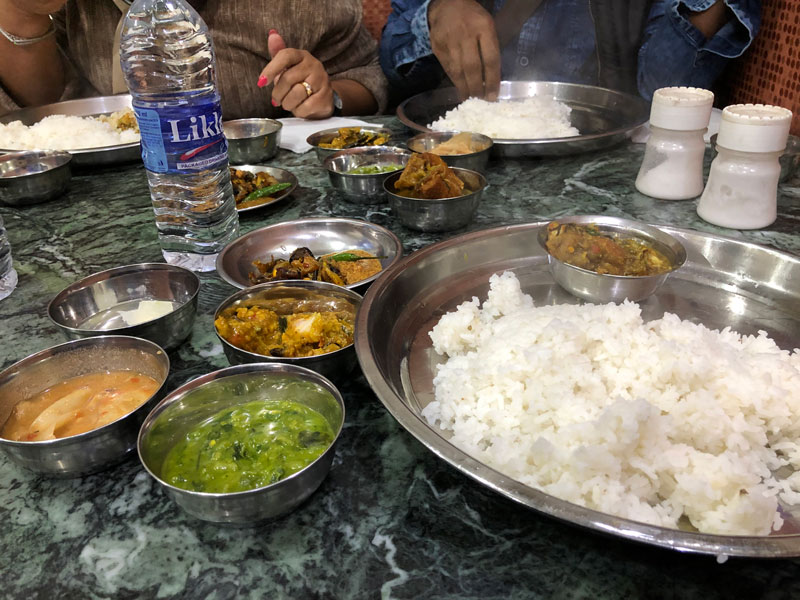
RK: Your podcast was called The Real Food Podcast. How do you define real food?
VD: When we developed the podcast we were always clear that we would focus on home food, on the food that people actually ate but somehow never wrote about. We did a podcast about papads. There’s very little thought about what goes into papads, about the difference between papadams and appalams and all the other kinds of papad. There’s a paradox in how insular people can be about food in India. People are willing to try food when it’s very different from their own food. But when it’s even slightly similar to their food, they’re not interested, because they think, this is just like our food!
So people will try Italian or Chinese, but not only will they not try the food from the State next to theirs, but they’ll actually be prejudiced against it. Their objection isn’t just that the food is similar, but that they’re making it wrong!
RK: Do you think that there’s been some kind of effort to forge a national culinary identity? Has that made it difficult to celebrate the deeply regional cuisines?
VD: I don’t know how conscious it’s been, but the process definitely has been taking place. Certainly with some groups, you do see a concerted effort to define what is Indian and what is not Indian. You see a lot of that with the whole beef debate.
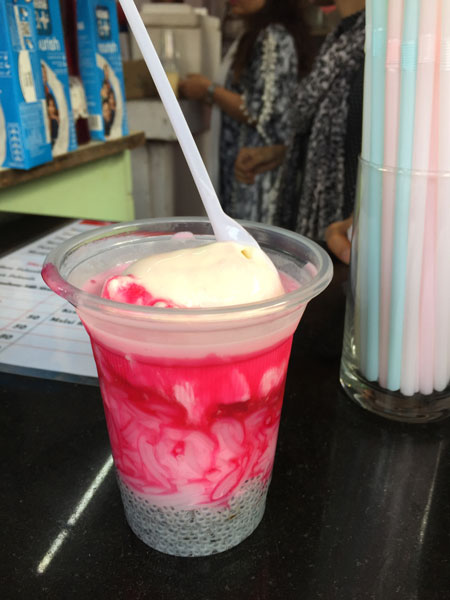
Another problem is this dichotomy between vegetarian and non-vegetarian food. First and foremost, this term non-vegetarian is a particularly Indian one. And if you’re a non-vegetarian it doesn’t just mean that you eat meat but you have to eat a lot of meat. You have to eat primarily meat. And if you’re a vegetarian, you can’t eat any meat. But the truth is that a lot of recipes in India are what I call semi-vegetarian — recipes that are largely vegetarian but use a little bit of meat as a flavouring. For instance, right down the Konkan coast there’s a whole range of recipes that are basically vegetables that are flavoured with dried shrimp. And these are quite healthy because they’re quite low in oil, and they’re completely balanced, but they’re vanishing. And this is partly because dried shrimp is very smelly, so people don’t stock it at home or cook it in restaurants. One chef told me, I don’t want to cook these dishes in the hotel, because if I did then the whole hotel would smell of dried shrimp. So this whole range of semi-vegetarian foods is vanishing.
RK: So much of meat consumption in India is almost fetishistic. Do you think this is because it’s been so suppressed?
VD: People are getting split. It’s an example of how a dominant narrative is changing the way we eat. When my grandmother was old, in Chennai, she had these ladies who worked as caregivers and cooks for her. They cooked very simple food for her because by then she was mostly vegetarian. But she knew that they ate meat, so she would give them a little money to make food for themselves, too. It wasn’t a lot of money, so they would buy the cheapest stuff they could get. She knew that I was interested in food, so she would ask them to make that same food for me. And they were very reluctant. They said, “How is he going to eat this food?” And I had to say, no, I really am interested. And then they started cooking all this fascinating food for me. They would cook things like intestines, which are actually widely consumed by Dalits, very poor people, but that’s not the food that you’ll often see written about.
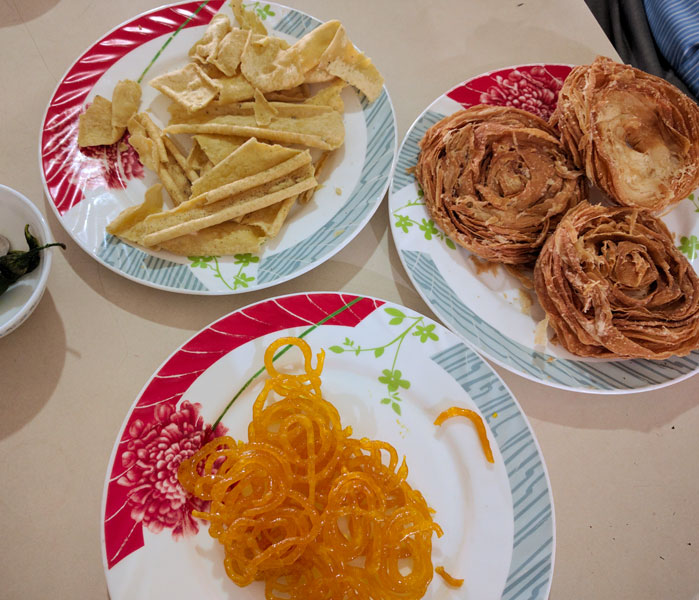
And no Indian restaurant is going to serve you intestines. But these women would cook beans with a bit of chopped-up intestines, or they would cook dried fish. One of them had an amazing dish of brinjal flavoured with dried fish. There are all these dishes that poor people cook for themselves, which are nutritious, tasty, and environmentally sustainable. But they’re vanishing.
RK: Cooking like this often illustrates rituals and habits that are reflective of local cultures in ways that restaurants aren’t. Do you think it’s unfair or unrealistic to expect restaurant dining to be an engine for a revival of interest in regional Indian food?
VD: A lot of young chefs are interested in regional food. A lot of the older chefs have to work within the constraints of five-star hotels and so they have to produce food that caters to luxury tourists and that’s distorted things. But even the way that food is produced in a large catering system is fascinating. Wedding caterers, for example, have their own distinct food. There’s a lot to be learned from chefs and caterers. Like the difference that cooking with different kinds of wood makes. Certain caterers will insist on cooking their biryani only over a particular type of wood fire because they say that wood and the metal of the utensils they use have an effect on the taste of the finished dish.
Some caterers insist on cooking biryani over a particular type of wood fire because they say that wood and the metal of the utensils they use have an effect on the taste of the finished dish.
While stainless steel is ubiquitous nowadays, especially in households, many caterers will still use traditional metals. Stainless steel came into Indian kitchens for one reason: because it was easy to clean. It doesn’t react with acids. And a whole generation of housewives, who’d grown up as daughters-in-law and spent large portions of their lives washing brass utensils, took it up. If you’ve ever washed a brass vessel you know it’s a real pain. You have to use tamarind water and really scrub it. And that’s how stainless steel entered Indian kitchens. The kabbadiwallahs would go around from door to door exchanging brass vessels for stainless steel. And they had this whole barter scheme so no money was involved. Many of these women who didn’t control money, but who did control utensils and saris, were able to do these barters and get stainless steel into their kitchens.
It’s much easier to take care of, it’s lighter, it’s easier to clean. But it’s not a good cooking medium — it doesn’t conduct heat very well, which is why many caterers have resisted stainless steel and stuck to copper or brass or tin. They insist, correctly, that in order to get a particular taste, they need those utensils. Temple cooking is still done to a large extent in traditional vessels and with traditional utensils.
Courtesy www.onceuponatiffin.com
Pictures by Rasheeda Bhagat
Invaluable self-published food books
On the future of food writing and food books, Vikram Doctor says:
It’s going to be fascinating.
A lot of people are documenting the foods of small, local communities. I think some of the most interesting recent food books in India have been self-published and this helps people collect their communities’ stories.
But it costs money, and hence the more affluent communities can do it. Like Dadimano Varso, which is one of the most amazing cookbooks produced in India. It’s in Gujarati and English. It was produced by a ladies’ association in the Palanpuri Jains community, which has diamond traders spread out across the world. They wanted to document their food, being worried that their traditions were getting lost. And the book is extraordinary beyond the typical books of this sort.
Another example of a great self-published book is The Indecisive Chicken, which was produced by Prajna Desai. This came out of the Dharavi Biennale, an attempt to find different ways to look at lives in Asia’s largest slum, and is certainly one of its most famous. Prajna is an art scholar by training who was looking at a way to connect with women in the slum. She was interested in cooking and realised that, as always, food is a way to get women to start speaking about their own lives.
So she got a group together and had them talking about their lives and the food they cook daily and she got them to document it and also had it photographed. The result is quite amazing because it’s a chronicle of regular food that people cook in their homes. It has community influences, too, like when a woman from a potters’ community heats a shard of broken pottery and stirs it through her baingan bharta to give it an earthy flavour.
But mostly what you get from the recipes and images is a sense of food as it is really lived. But Prajna had to produce it herself since no publisher would take it on as a commercial proposition. It says something disappointing about publishers, but it’s still empowering that she could still do it.
Or there’s YouTube and all the thousands of Indian cooks who are putting up cooking videos on it. This is really important when it comes to things like breads, where videos allow you to capture the hand movements that are so important. Or there are channels like Village Food Factory, where a guy with a camera captures the food his father makes — and shows how food is actually cooked in villages, and that there is this whole non-vegetarian side to Tamil cooking. It’s not always in the form of writing, but it is documentation.
Such documentation gives you the chance to connect dots and start assembling larger pictures. There are so many stories to be told in Indian food. You have stories about community, about the caste and gender hierarchies and how they affect cooking. There are stories about environmental change and how food is changing as a result of it. The increasing access to packaged foods is creating its own changes, too. Sure, some of the effects may be problematic and that can be pointed out, but there’s also the sheer fascination in how it is all working itself out. There’s so much to write about!

